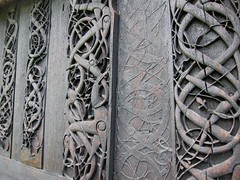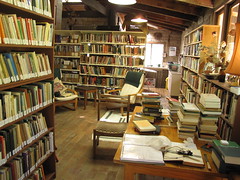| 4763411034 | action painting | Definition: an abstract painting in which the artist drips or splatters paint onto a surface like a canvas in order to create his or her work |  | 0 |
| 4763411035 | allegory | Definition: art that has symbolic meaning beyond literal interpretation. In literature, a fable is an allegory. |  | 1 |
| 4763411036 | Amphora | Definition: A two-handled jar used for the storage and transport of wine, oil, dried fish, and other commodities |  | 2 |
| 4763411037 | Anamphoric image | Definition: an image must be viewed by a special means, such as a mirror, to be recognized. In this example the scull can only be seen if a mirror is held up to the picture. |  | 3 |
| 4763411038 | animal style | Definition: Animals depicted in a stylized and often complicated pattern, often seen fighting with one another |  | 4 |
| 4763411039 | apotheosis | Definition: a painting where the figures are rising heavenward. Often used in church ceilings. |  | 5 |
| 4763411040 | arabesque | Definition: a flowing, intricate, and symmetrical pattern deriving from floral motifs. Frequently used in Islamic art. |  | 6 |
| 4763411041 | assemblage | Definition: 3-D work in mixed media. Could be wall art or a sculpture. (2) an artwork composed of objects, parts of objective materials originally intended for purposes other than art |  | 7 |
| 4763411042 | bas relief | Definition: a sculptural relief in which forms extend only slightly from the background; often called low relief |  | 8 |
| 4763411043 | benday dots | Definition: (named for Benjamin Day) Printing process using pointillist dots and limited color palette placed close together to achieve subtle shading. This example is by Lichtenstein in the 1960's. |  | 9 |
| 4763411044 | black figure technique | Definition: In early Greek pottery, the silhouetting of dark figures against a light background of natural, reddish clay, with linear incised details. |  | 10 |
| 4763411045 | bust | Definition: sculpture head, neck, and upper chest
Period: Very common in Roman period |  | 11 |
| 4763411046 | Calligraphy | Definition: decorative handwriting, often used in religious art and manuscripts. |  | 12 |
| 4763411047 | calotype | Definition: early type of photography, grainy. |  | 13 |
| 4763411048 | Cartouche | Definition: The oval-shaped symbol in which the names of kings and queens of Egypt were written on the walls of the temple. |  | 14 |
| 4763411049 | chiaroscuro | Definition: a gradual transition from light to dark in a painting. Forms are not determined by sharp outlines, but by the meeting of lighter and darker areas. The lighter areas are used to emphasize the subject. Very common in 15-17th century European paintings. Rembrandt is a master of this style. |  | 15 |
| 4763411050 | cire perdue | Definition: (Lost wax) process of making sculpture; a clay mold is covered in wax, which when heated produces a void where metal can be poured in. |  | 16 |
| 4763411051 | cloisonne | Definition: enamel work technique; colored bands are separated by bands of metal. Sometimes the bands are flush with the enamel, sometimes the bands protrude. |  | 17 |
| 4763411052 | Contraposto | Definition: A figure pose which shows the human body twisted usually the shoulders and chest face a different direction than hips and legs. Done to add motion to works of art. |  | 18 |
| 4763411053 | encaustic | Definition: An ancient method of painting that uses colored waxes burned into a wooden surface. |  | 19 |
| 4763411054 | Foreshortening | Definition: The use of perspective to represent in art the apparent visual contraction of an object that extends back in space at an angle to the perpendicular plane of sight. | | 20 |
| 4763411055 | found relief | Definition: The projection of figures or forms from a flat background, as in sculpture, or the apparent projection of such shapes in a painting or drawing. |  | 21 |
| 4763411056 | fresco | Definition: Wall and ceiling painting on fresh (moist) lime plaster. Pigments ground in water and absorbed into plaster. |  | 22 |
| 4763411057 | Grisaille | Definition: painting done in neutral shades of gray to simulate the look of sculpture. |  | 23 |
| 4763411058 | groundline | Definition: in paintings and reliefs, a painted or carved baseline on which figures appear to stand. For example, In Egyptian work the figures and objects are placed on the ground line without reference to their actual spatial relationship. |  | 24 |
| 4763411059 | Haut Relief | Definition: a form of sculpture that is carved from, or attached to, its background. Depth of carving equal to more than half the natural circumference of the object carved |  | 25 |
| 4763411060 | hierarchy of scale | Definition: represents a person's relative importance by the size of his depiction |  | 26 |
| 4763411061 | hieroglyphics | Definition: Egyptian writing using symbols or pictures as characters |  | 27 |
| 4763411062 | horror vacui | Definition: a type of artwork in which the entire surface is filled with objects, people, designs, and ornaments in a crowded, sometimes congested way |  | 28 |
| 4763411063 | icon | Definition: a visual representation (of an object or scene or person or abstraction) produced on a surface | | 29 |
| 4763411064 | iconography | Definition: the images and symbolic representations that are traditionally associated with a person or a subject |  | 30 |
| 4763411065 | iconoclasm | Definition: a challenge to or overturning of traditional beliefs, customs, and values, any movement against the religious use of images | | 31 |
| 4763411066 | Illuminated Manuscript | Definition: A hand written book decorated with bright colors and precious metals. Monks created the illuminated manuscripts. |  | 32 |
| 4763411067 | in situ | Definition: in the original or natural place or site. Artwork or sculpture that resides in the location where the materials to make that artwork is found. | | 33 |
| 4763411068 | Krater | Definition: An ancient Greek wide-mouthed bowl for mixing wine and water. |  | 34 |
| 4763411069 | Kylix | Definition: A Greek drinking cup, but very wide and flat with handles.. |  | 35 |
| 4763411070 | mandorla | Definition: an almond-shaped nimbus surrounding sacred figures., an almond-shaped nimbus surrounding the figure of christ or other sacred figure |  | 36 |
| 4763411071 | mask head | Definition: An animal head employed in conjunction with interlace or foliage motifs. |  | 37 |
| 4763411072 | Perspective | Definition: the appearance of things relative to one another as determined by their distance from the viewer |  | 38 |
| 4763411073 | Perspective: atmospheric perspective | Definition: the illusion of depth and distance created by using the weather in a landscape and dull, pale colors with hazy details in the background of a painting. |  | 39 |
| 4763411074 | Perspective: Overlapping Perspective | Assumes the object in front is closer than items in back. |  | 40 |
| 4763411075 | Perspective: One-point perspective | Definition: A method of realistic drawing in which the part of an object closest to the viewer is a planar face, and all the lines describing sides perpendicular to that face can be extended back to converge at one point, the vanishing point |  | 41 |
| 4763411076 | Perspective: Two-point perspective | A realistic way of drawing objects in three dimensions using a horizon line, a key edge, and two vanishing points. |  | 42 |
| 4763411077 | Perspective: Multipoint Perspective | Definition: Uses more than 2 vanishing points; different objects have different vanishing points. This is marked if the lines aren't parallel to each other. This effect gives the viewer a disjointed effect. |  | 43 |
| 4763411078 | Perspective: Twisted Perspective | Definition:a convention of representation in which part of a figure is shown in profile and another part of the same figure is shown frontally (a composite view) |  | 44 |
| 4763411079 | Perspective: Vanishing Point | Definition: A point in space, usually located on the horizon, where parallel edges of an object appear to converge. |  | 45 |
| 4763411080 | Perspective: Vertical Perspective | Items are stacked either diagonally or vertically. Things that are placed higher are portrayed farther away. |  | 46 |
| 4763411081 | red figure technique | Definition: In later Greek pottery, the silhouetting of red figures against a black background, with painted linear details; the reverse of the black-figure technique. |  | 47 |
| 4763411082 | Repousse | Definition: a technique in which a relief is formed on the front by hammering a metal plate from the back. |  | 48 |
| 4763411083 | Secco | Definition: Pigment on dry, rather than wet plaster. |  | 49 |
| 4763411084 | Stele | Definition: an ancient upright stone slab bearing markings |  | 50 |
| 4763411085 | Sunk Relief | Definition: image carved not area around it. Used in Egyptian art. |  | 51 |
| 4763411086 | Stylized | Definition: Simplified or exaggerated visual form that emphasizes particular or contrived design qualities. |  | 52 |
| 4763411087 | tessera(e) | Definition: a small piece of stone, glass,etc. used in making a mosaic. |  | 53 |
| 4763411088 | veristic | Definition: sculptures from the Roman Republic characterized by extreme realism of facial features |  | 54 |
| 4763411089 | Perspective: Scientific Perspective | Definition: An approximate representation on a flat surface of an image as perceived by the eye. Foreshortening and getting smaller the farther away. The use of perspective that made artwork so life-like that viewers wanted to reach out and touch it; before this art was flat. |  | 55 |
| 4763411090 | Maniera Greca | Definition: "greek style" of the 13th century that demonstrated both Italian and Byzantine influences. Frontal, lack of modeling (flat forms), extensive use of gold leaf. |  | 56 |
| 4763411091 | engraving | Definition: Printmaking process where a tool (burin) is used to carve into a metal plate. Ink passed into the crevasses make the drawing on the paper. |  | 57 |
| 4763411092 | etching | Definition: printmaking technique in which a metal plate is covered with an acid-resistant medium (wax) and worked with an etching needle to create an image. The plate is then put in acid, exposing the carved areas. Ink is then poured into the exposed areas. Etching gives the finest details. |  | 58 |
| 4763411093 | woodcut | Definition: A printmaking technique where the parts of a wooden block are cut away -- only the raised parts left on the surface are shown in the finished print. It generally has the thickest lines and the least detail of the printmaking techniques. |  | 59 |











































































































































































